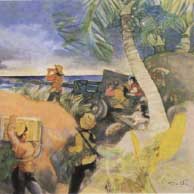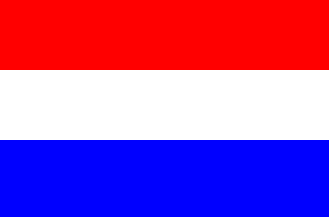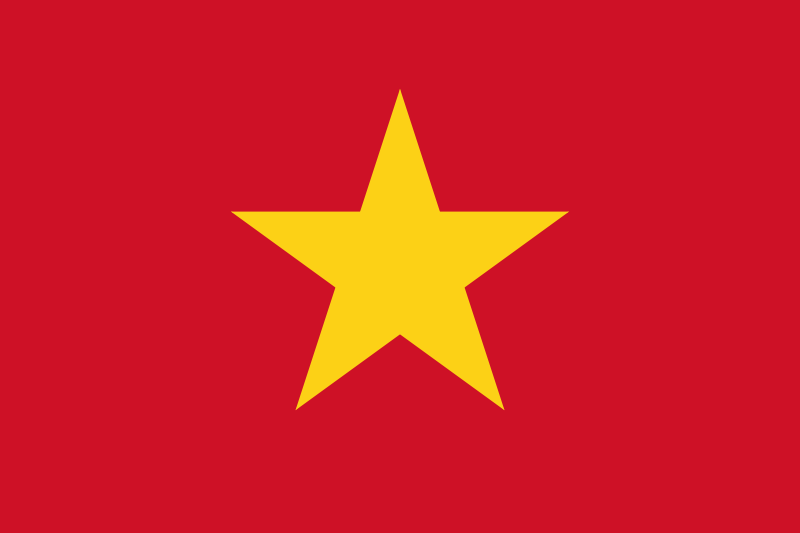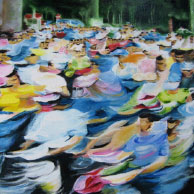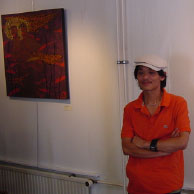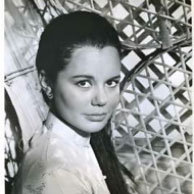- Productie: S2B discover!
- More about Vietnam
- Redactie: Roby Bellemans
A bit about Việt Nam
Visual arts & Vietnam
Today, the Internet services in Vietnam are properly. Vietnamese who speak the English language are pretty good aware of what art it is made in the West. However, it remains a big difference to something on a computer screen or in real life to see. Of course there are books, but the income in Vietnam is very low. Many people are still under the $ 200, - p / m and art books are there just as expensive as here. Only artists who have a small gallery where you can buy reproductions of all international masterpieces, can (must) buy such an expensive art book. It is sometimes disparagingly done on that copy, while everyone sitting at the academy for years nothing else do. Also a great painter Piet Mondriaan as earned his living with it, he had a special pass stating that he was allowed copying masterpieces in the Louvre. In the Paris years of Mondrian (in Paris Mondriaan wrote his name as Mondrian) Paris was the world center for the visual arts. Mondrian went there in 1914 and stayed there with a single interruption until 1938. Ho Chi Minh stayed there between 1919 and 1923. In the Ha Noi "Ho Chi Minh museum" hang a lot of pictures of friends of Mondrian, but I could not discover whether Mondrian and Ho Chi Minh met each other there. It certainly would not surprise me because they were active in the same circles.
In Vietnam itself they had at that time as well as no knowledge of the fine arts as we knew here. Making paintings and landscapes had also made no really big development. You could almost say that it just did not exist, at least not like here in Europe. There also were no art schools in Vietnam. It was in 1924 that the French colonizers, on the recommendation of the painter Victor Tardieu, started in Ha Noi, as the first city in Vietnam, with a "High School of the Arts of Indochina", the school was officially opened in 1925. The North is culturally the cradle of Vietnam, which will probably have played a role in the choice of Ha Noi. But who has read the recently published book by Philippe Peycam "The Birth of Vietnamese Political Journalism Saigon 19167-1930" (*), you might suspect that the French in the turbulent south not wanted another breeding ground for political mischief.
Tardieu was a very skilled traditional working artist who was not infected with the revolutionary visions of Mondrian and his colleagues. Nevertheless Tardieu has been of enormous importance for the development of the Vietnamese painting (**). This development is, as many developments in Vietnam, incredibly interesting. In particular, the splitting of Vietnam in a Northern and a Southern part is quite been decisive: in the North the painting was supporting the revolution, in the South there was complete freedom. But, as Kandinsky already stated, the external form is only one possible expression of the inner. I find the Ha Noi artist Tranh a typical example. He likes to paint beautiful women, the following three examples show very well the zeitgeist.
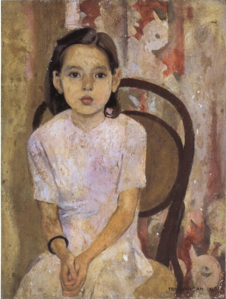
Little Thuy, 1943, collection Fine Arts National Museum Ha Noi.
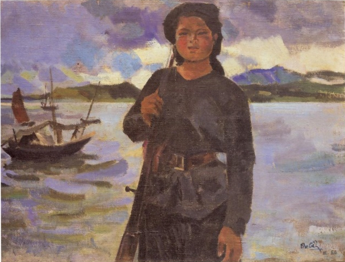
Female militia from the coastal, 1960, collection Fine Arts National Museum Ha Noi.
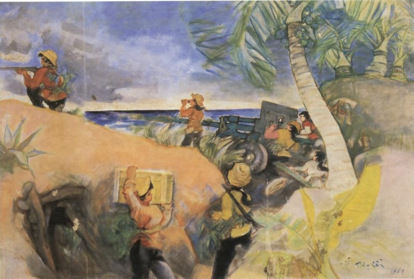
Female militia, 1969, collection Pham Van Bong, Ha Noi.
On the first picture you can see a beautiful girl, painted in 1943. In 1960, after the split, you will see a beautiful girl, but now she wears a uniform. And in 1969, they still fought hard and the painters were still supporting "with heart and soul", but it does not mean that this beach scene could also be just a picnic. It is a war picture, but they are still pretty and interesting women.
Vietnamese people have the habit to take the good things from their occupiers, for this they are also very interested in Western art. Unfortunately, their ability to travel is quite limited. Not only financially, a simple to a European country is quite complicated, usually they need someone who guarantees their state. While getting to know a country, you should go and see not only the highlights in the museums, you should also visit the small local art galleries. For most Vietnamese this is impossible and when Moses can’t go to the mountain, the mountain is should go to Moses. That’s what we want to achieve with our exhibition: to make it possible for the Vietnamese art lovers to take note of what is so all created by professional artists working in the Netherlands.
In future issues we will become acquainted with the participants. Some were in Vietnam in the past already, they talk briefly about their visit and show what impact it visit had on their work.
(*) The Birth of Vietnamese Political Journalism, Saigon 1916-1930; New York 2012, Columbia University Press/ 9780231158503
(**) catalogus tentoonstelling ’Vietnam, Plastische en Visuele Kunsten van 1925 tot vandaag’; Brussel 1998, La Lettre Volee 2873170786
